
PA6 CF - Pushing Boundaries in Materials Science
PA6 CF Reinforced Composites elegantly combine PA6 and carbon fibers. Polyamide 6 exhibits commendable mechanical properties. The integration of carbon fibers remarkably escalates tensile strength, modulus, and heat resistance. Moreover, it presents exceptional fatigue resistance, ensures excellent dimensional stability, and boasts low thermal expansion. All these traits make it highly suitable for diverse demanding applications.
Ideal for the aerospace industry where lightweight and high strength are crucial for fuel efficiency and performance. In the automotive sector, it helps improve vehicle efficiency and safety. The sports field benefits from it too, enhancing equipment durability and performance. However, the manufacturing process of PA6 CF Reinforced Composites is complex. It requires advanced techniques and precise control, leading to high production costs. Also, it has anisotropic properties, meaning its properties vary depending on the direction, which requires careful design and engineering. Despite these challenges, it remains a high-performance material, well-suited for demanding applications that demand superior mechanical and thermal properties.
Product By Features
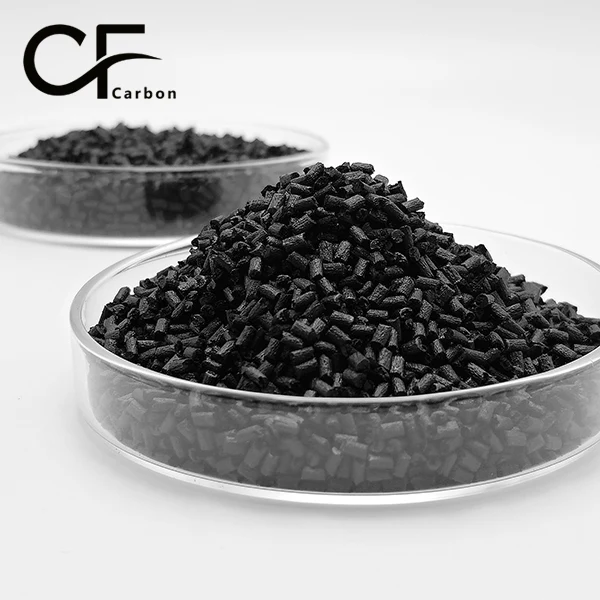
CF-RTP Thermoplastic Compounds PA6 CF40 Particles
1: Tensile strength reaches 285 MPa 2: Heat deflection temperature up to 215°C 3: Thermal expansion coefficient 2.1×10⁻⁵/°C 4: Wear rate reduced by eighty-five percent 5: Water absorption below one point five percent
Learn More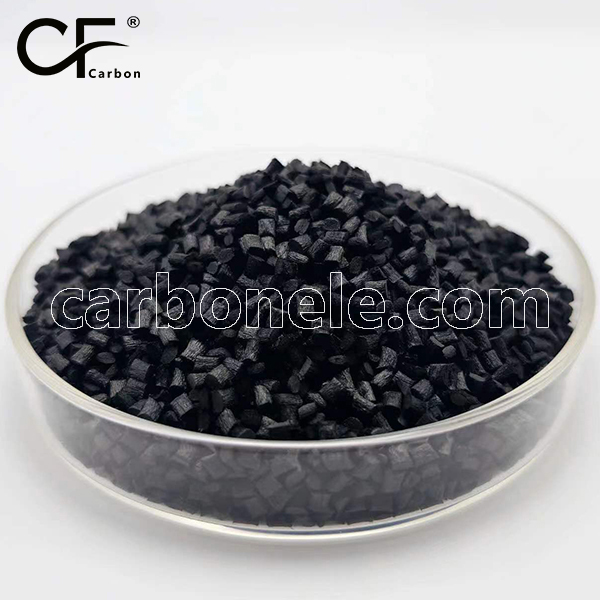
Advanced PA6 CF30 Plastics – For Machiner...
PA6 CF30 carbon fiber reinforced nylon delivers unmatched strength & vibration damping for machinery frames. Revolutionize CNC, packaging & conveyor systems with lightweight, durable & maintenance-free performance. Upgrade your industrial equipment today.
Learn More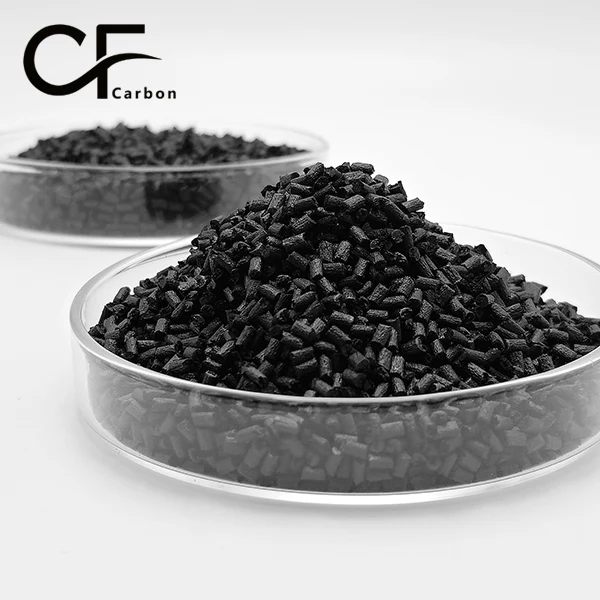
CF-R Thermoplastic Composites PA6 CF50 PA6-CF-BCA5
1: Tensile strength reaches up to 285 MPa. 2: Elastic modulus of 21 GPa for high stiffness. 3: Heat deflection temperature reaches 218°C. 4: Fatigue strength maintains 85% after 10⁷ cycles. 5: Molding shrinkage rate is only 0.2%.
Learn More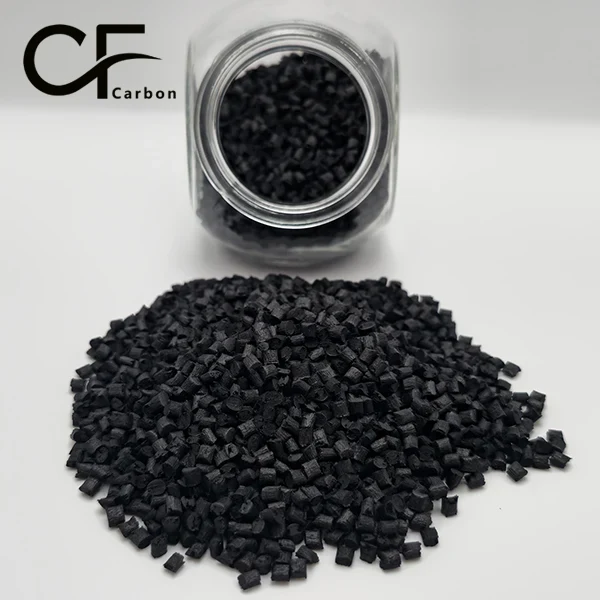
Thermoplastic CF Composites PA6 CF10 PA6-CF-BCA1
1: Tensile strength reaches 120 MPa 2: Flexural strength reaches 180 MPa 3: Surface resistivity 10⁶-10⁸ Ω 4: Flexural modulus reaches 6.5 GPa 5: Shrinkage rate only 0.8%
Learn More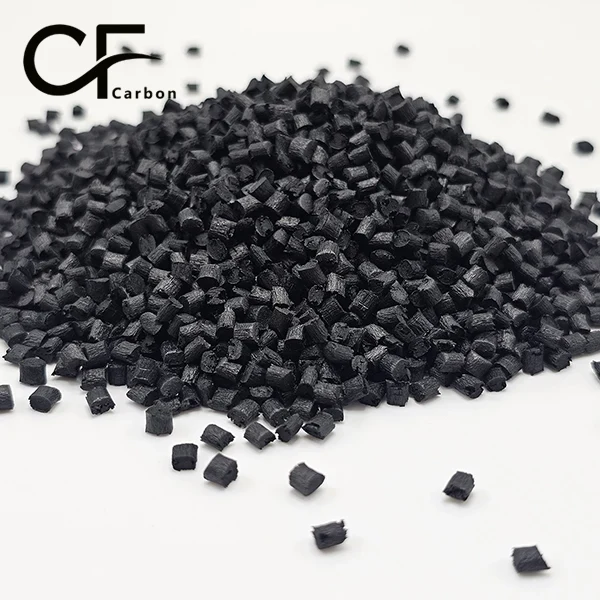
PA6 CF20 (PA6-CF-BCA2) Carbon Fiber Compound Su...
1: Tensile strength reaches 160 MPa 2: Flexural strength reaches 220 MPa 3: Heat deflection temperature reaches 195°C 4: Flexural modulus reaches 9.5 GPa 5: Wear amount reduced by 45%
Learn More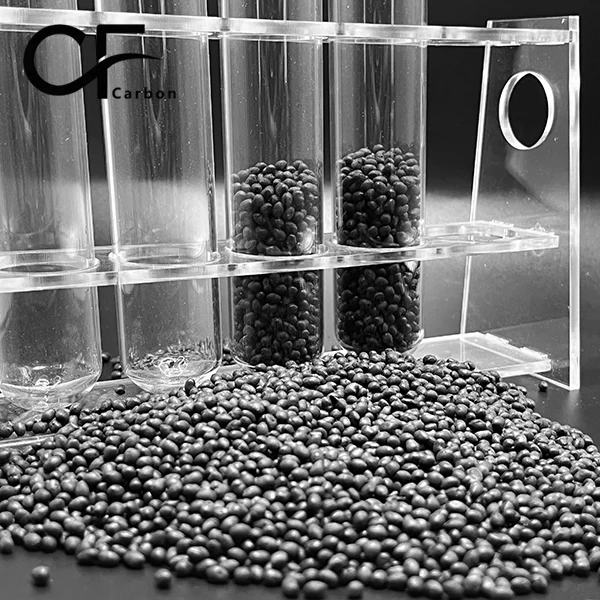
Thermoplastic Carbon Fiber Compounds PA6-CF20-BCA
1: 185 MPa tensile strength enhancement 2: 240 MPa flexural strength performance 3: 195°C heat deflection temperature rating 4: 0.3% low molding shrinkage rate 5: 25g/10min melt flow index
Learn More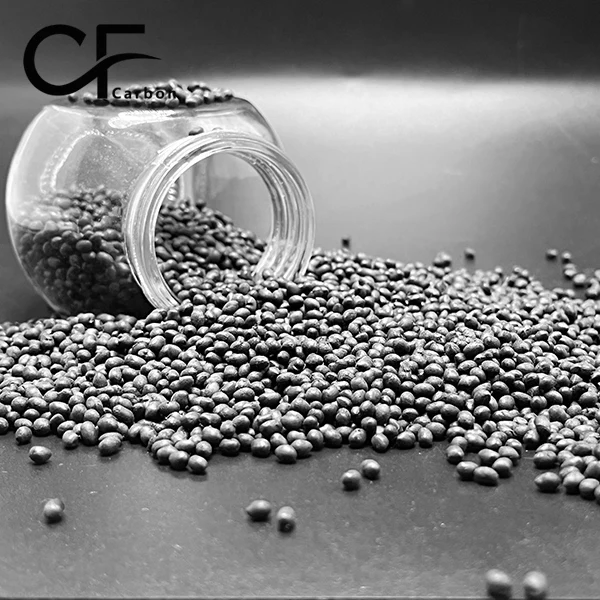
Thermoplastic Carbon Fiber Composites PA6 CF30
1: 210 MPa tensile strength for load-bearing 2: 280 MPa flexural strength under stress 3: 200°C heat deflection temperature resistance 4: 1.8% low water absorption rate 5: 9,500 MPa flexural modulus rigidity
Learn More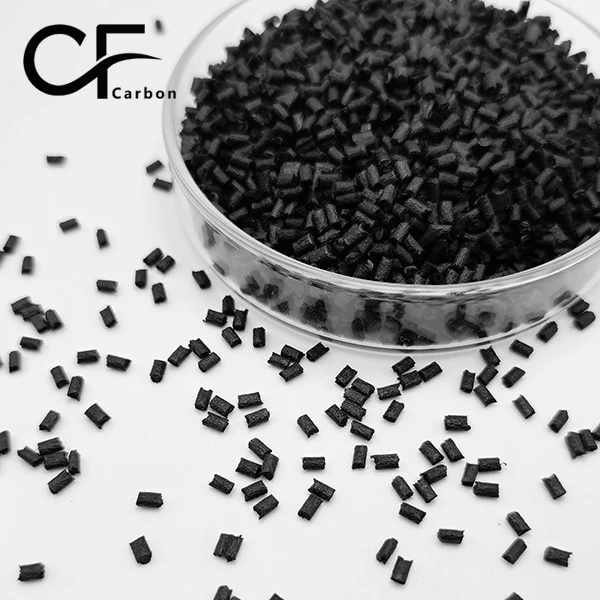
General Grade High Strength PA6&PA66 CF40 ...
1. 210 MPa tensile strength for structural reliability 2. 235°C heat resistance ensures thermal stability 3. 80% wear reduction with 0.20 friction coefficient 4. 16 GPa flexural modulus provides extreme rigidity 5. 0.25% low shrinkage maintains precision molding
Learn More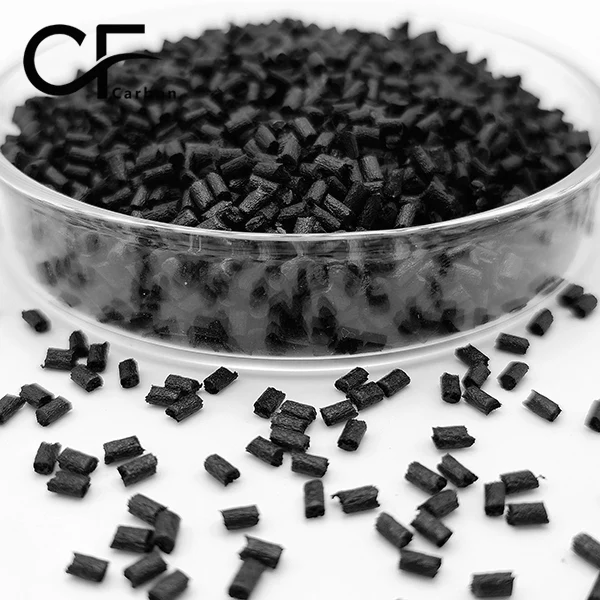
Wear-resistant Plastic Particles PA6&PA66 ...
1. 195 MPa tensile strength for structural reliability. 2. 225°C heat resistance ensures thermal stability. 3. 75% wear reduction with 0.22 friction coefficient. 4. 14 GPa flexural modulus provides superior rigidity. 5. 0.3% low shrinkage maintains dimensional precision.
Learn More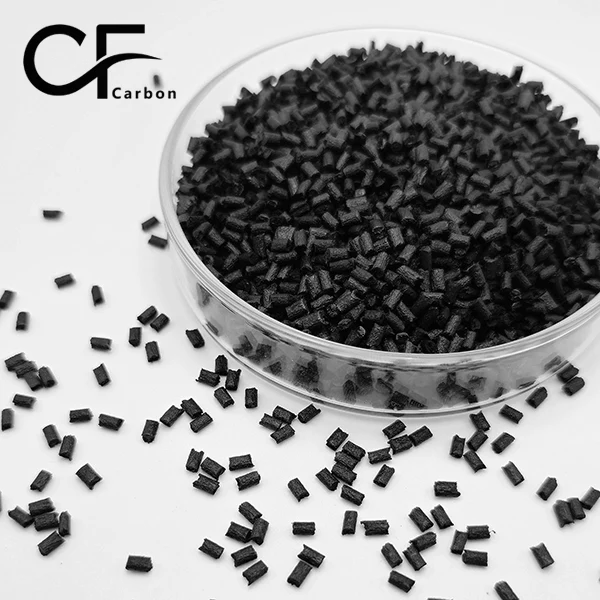
CF-Modified Alloy Resins PA6/PA66 CF20 Plastic ...
1.185 MPa tensile strength for structural reliability. 2. 220°℃ heat resistance ensures thermal stability. 3.70% wear reduction with 0.25 friction coefficient. 4.13 GPa flexural modulus provides superior rigidity. 5. 0.35% low shrinkage maintains dimensional precision.
Learn More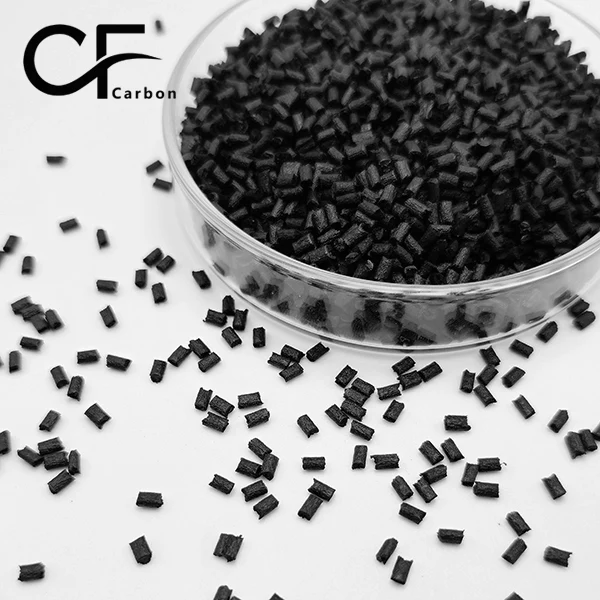
Toughened PA6 PA66 CF Particles
1. Impact strength reaches 25 kJ/m², 50% higher than non-toughened type. 2. Tensile strength maintains above 140 MPa with balanced toughness. 3. Flexural modulus up to 10 GPa, ensuring high structural rigidity. 4. Heat deflection temperature ≥195°C, suitable for high-temperature environments. 5. Wear resistance improved by 50% with friction coefficient…
Learn More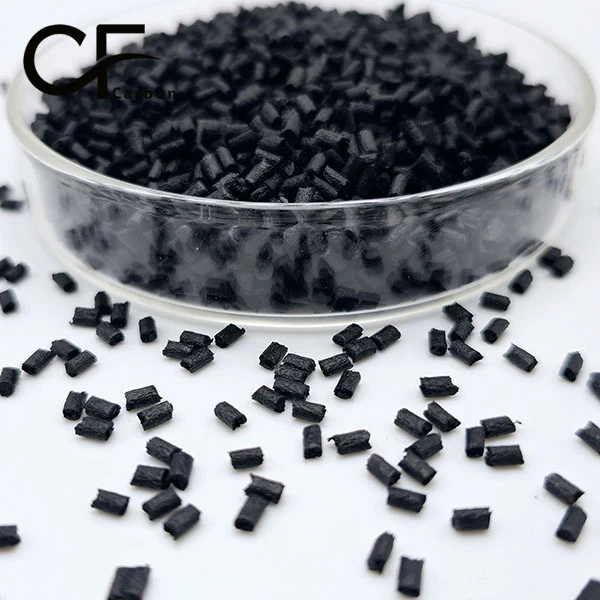
Wear-resistant Grade PA6 CF27 MoS2 Particles
1.75% higher wear resistance than standard PA6 2.55% lower friction with MoS2 lubrication 3.175MPa tensile strength from 27% CF 4.<0.5% creep deformation at 80°C/50MPa 5.95% oil resistance after immersion
Learn MoreProduct Feature Box

WEAR RESISTANCE

CONDUCTIVE MATERIALS

HIGH STRENGTH

ANTI STATIC

SCRATCH RESISTANCE

ABRASION RESISTANCE

ECO FRIENDLY

LIGHT WEIGHT
Company Advantage

Skilled and Motivated Workforce
Talented employees with expertise and a passion for their work can drive productivity and innovation. Google is known for attracting top talent.

Adaptive and Agile Culture
Quickly respond to changes in the market and adapt its strategies and operations is more likely to succeed. Netflix has demonstrated this ability in the evolving media landscape.

Strategic Partnerships and Alliances
Collaborating with other businesses can provide access to new technologies, markets, or resources. Microsoft's partnerships in the cloud computing space have strengthened its position.
Frequently Asked Questions
Carbon (Xiamen) New Material Co., Ltd. aims to provide buyers with "one-stop" worry-free high-quality services. Here you can find all information about carbon fiber engineering plastics. If you still have questions, please send us an email for consultation!
-
What are the main advantages of PA6 CF Reinforced Composites?
They offer high tensile strength, improved heat resistance, and excellent fatigue resistance. Also, they provide good dimensional stability and low weight compared to traditional materials.
-
How is the durability of PA6 CF Reinforced Composites in harsh environments?
These composites have excellent resistance to chemicals, moisture, and temperature variations, making them suitable for use in various harsh conditions.
-
Can PA6 CF Reinforced Composites be machined easily?
While they can be machined, it requires specialized tools and techniques due to their high strength and hardness.
-
What is the typical cost range of PA6 CF Reinforced Composites?
The cost varies depending on factors such as the quality, quantity, and specific properties required. Generally, it is higher than common materials, but the performance justifies the expense in many applications.
-
Are there any limitations to the use of PA6 CF Reinforced Composites?
Their complex manufacturing process and higher cost can be limiting factors. Also, their anisotropic properties need to be considered in design.
-
How does the addition of carbon fibers affect the electrical conductivity of PA6?
The carbon fibers can increase the electrical conductivity to some extent, but it depends on the fiber content and orientation.
-
What kind of surface treatments are available for PA6 CF Reinforced Composites?
Common surface treatments include painting, coating, and plasma treatment to enhance adhesion, corrosion resistance, or aesthetic appearance.
-
How do the mechanical properties of PA6 CF Reinforced Composites change with temperature?
The mechanical properties remain relatively stable over a wide temperature range, but they may start to degrade at extremely high temperatures.









